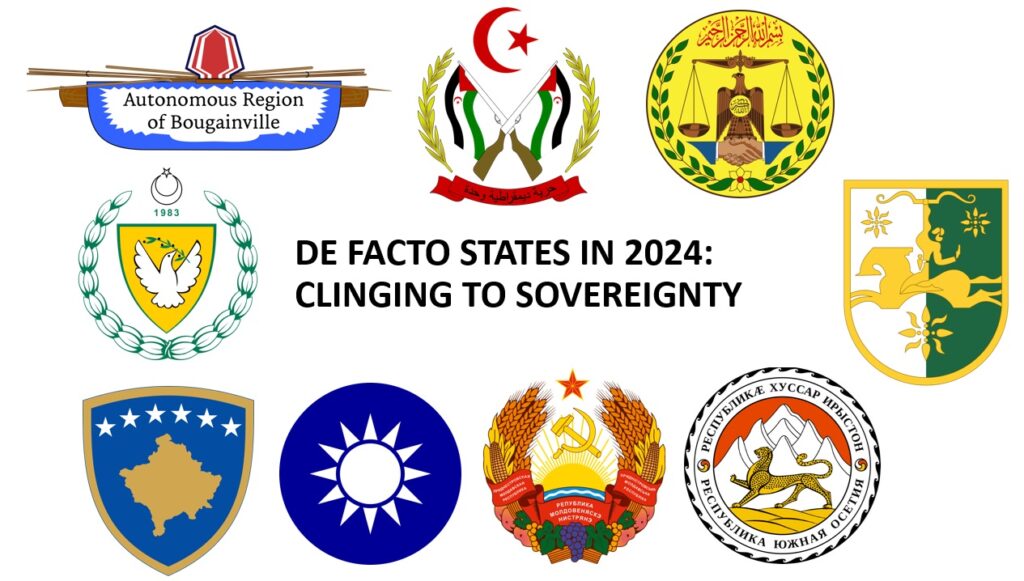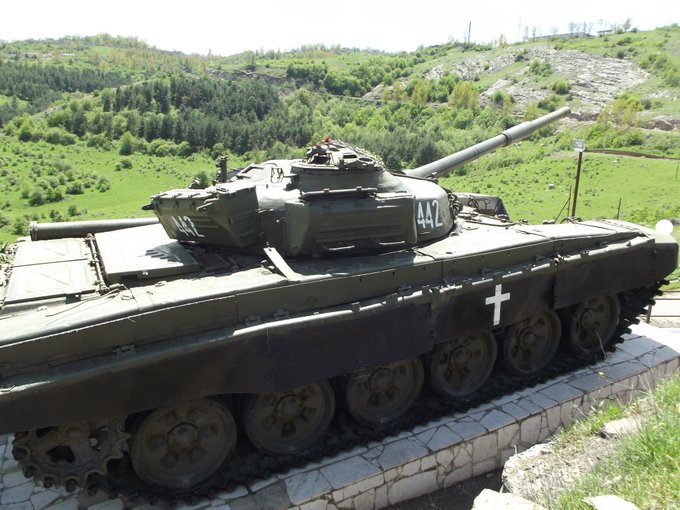From Agreement for Normalisation to Agreement on the Path to Normalisation: How the West Switched Focus in the Kosovo-Serbia Dialogue Process
On February 27, the leaders of Kosovo and Serbia adopted the EU proposal in Brussels, officially called the ‘Agreement on the Path to Normalisation between Kosovo and Serbia’, which includes 11 provisions. On March 18, the leaders of Kosovo and Serbia met in North Macedonia under the auspices of the European Union and agreed on the 12-point Implementation Annex. Although the Annex states that ‘Kosovo and Serbia fully commit to comply with all Articles of the Agreement and this Annex and to implement expeditiously and in good faith all obligations arising from the Agreement and this Annex’, it also provides selective inclusion of specific agreement items. This blogpost discusses the process that led to the agreement, its potential impact on inter-state relations in the Western Balkans, and eventual normalisation of relations between Kosovo and Serbia in future.
To start with, this agreement marks the conclusion of several months of extensive shuttle diplomacy, which was orchestrated across the capitals of the West, including Brussels and Washington, as well as Berlin and Paris. To enhance the likelihood of success, the West adopted a ‘take-it-or-leave-it’ approach for the agreement, implying that the drafted document could be accepted or rejected by Kosovo’s Prime Minister Kurti and Serbia’s President Vucic, but it could not be altered. In the aftermath, the agreement was hailed as a success in the EU, and the leaders were lauded from across the ocean in Washington DC for taking an important step forward.

Image: Symbols of Kosovo statehood
The process yielded several significant outcomes, most notably Kosovo’s commitment to establish a framework for ‘self-management’ that grants wider rights to the Serbian community in Kosovo. At the same time, Serbia agreed to acknowledge certain attributes of Kosovo’s statehood at the international level, including a pledge not to speak on its behalf and to refrain from obstructing its membership in international organizations. The agreement also included for the first time the endorsement of the principles of sovereignty, territorial integrity, and self-determination as laid out in the UN Charter, bringing Serbia closer to a full de facto recognition of Kosovo as a sovereign state. However, the agreement’s preamble acknowledges that the parties hold different views on fundamental questions, including status issues. Despite the fact that the agreement does recognise a new reality in Kosovo-Serbia relations, it appears insufficient to normalise relations.
Haste in the West
The EU-facilitated dialogue began in 2011, following a mandate from the General Assembly of the UN. Initially, the process centred on technical dialogue but evolved into political negotiations with the objective of normalising relations. Throughout the years, the dialogue process has undergone multiple phases, with varying key mediators and adopted approaches. As part of the dialogue process since 2011, Kosovo and Serbia have arguably reached over 30 agreements, although they disagree on what the exact number of the agreements actually is.
While there were some successful outcomes, the dialogue process itself became a protracted one with no defined pathway or timeline. Partial implementation on the ground, coupled with frequent finger-pointing from both sides, further exacerbated the loss of trust in the process. It had become evident in both the West and the region that the root of the problem between Kosovo and Serbia is political rather than technical in nature. Although Kosovo insisted that mutual recognition was the only accepted outcome, many still saw normalisation of relations as the solution, no matter whether it came with or without de jure recognition. This is why the dialogue process could not gain a real momentum in recent years.
Russia’s invasion of Ukraine in February 2022 brought into attention the fragility of security dynamics and created a sense of urgency to ‘resolve’ Kosovo-Serbia relations, as a key security challenge in the Western Balkans region. The need for a solution deemed critical to enhance European security during this delicate phase by reducing Russia’s influence in the region. Moreover, an agreement between Kosovo and Serbia was perceived as a means to weaken Putin’s rhetoric, which has been frequently comparing the NATO intervention in Kosovo in 1999, to Russia’s seizure of Ukraine’s occupied territories. According to this logic, an agreement between Kosovo and Serbia would decrease the legitimacy of Putin’s claims.
Despite this sense of urgency, US and EU encountered a significant obstacle. Namely, the Serbian President Vucic was not prepared to sign or agree to a document that could fundamentally alter the status quo and the way how Serbia and its citizens perceive Kosovo. Russia’s support in the UN Security Council to prevent Kosovo’s accession to the organisation meant that Vucic had greater flexibility in his negotiating position. Ultimately, this presented the West with two options: either lower their expectations for the outcome of the process and essentially accommodate some of Vucic’s demands (as they did by essentially allowing Vucic to postpone sanctions against Russia, thus diverging from EU’s foreign policy), or attempt to apply more pressure against Vucic in order to achieve the outcome that was normalisation of relations.
On the one hand, it appears that the West was concerned about exerting more pressure that could backfire by providing Vucic’s regime and its controlled media with more ammunition to fuel an already increasing anti-NATO and anti-Western sentiments in Serbia. On the other hand, any failures or prolonged delays in the process were seen as playing into Putin’s general narrative against the West and NATO, while potentially pushing Serbia further into Russia’s sphere of influence. Given these circumstances it appeared that maintaining the status quo was a no go. This prompted increased efforts in Brussels and Washington over the past 12-18 months to reach the Ohrid Agreement (which was not signed, in accordance to President Vucic’s demand).
Normalisation of Relations: What is the Way Forward?
The result was a more general agreement and a less detailed implementation annex than it was initially reported and expected. Most importantly, the agreement fails to accomplish normalisation of relations, rather it becomes the first step of that process. Despite the shortcomings it still has enough substance to be considered the most important agreement between Kosovo and Serbia in the past 15 years. Having said that, there remain several challenges to be addressed while moving forward. Perhaps the three most pressing challenges are related to the ambiguity of certain provisions of the agreement, ensuring the successful implementation of the agreement over the long term, and its impact on the broader process of normalising relations. I will touch upon these three points in the following.
First, the agreement did not solve key disagreements, rather it recognised them, by stating that the agreement is ‘without prejudice to the different view of the Parties on fundamental questions, including on status questions’. The agreement is prone to deep ambiguities in certain parts of the text, i.e., using the term ‘frontier’ instead of ‘border’, which opens the ground for different interpretations. The Serbian Constitution continues to recognise Kosovo in its Preamble as an ‘an integral part of Serbia’. This agreement hardly changes ambiguities that will remain or will be even more pronounced as their interpretation largely depends on domestic and international political dynamics. Recognising profound ‘disagreements’ may not be a sustainable long-term solution as it constructs exclusionary realities that cannot coexist forever.

Image: Serbian president Vucic said he would not sign any deal now, or in the next four years (Source: TRT World, 18 March 2023)
Second, the agreement did not specify implementation and monitoring part well enough. Notably, there is a partial incorporation of certain articles into the Annex, some deemed more pressing than others. Given past history, there are reasons to believe that lack of good faith will once again be a challenge, in fact there are already claims that Serbia has blocked Kosovo’s membership in a regional body. The implementation annex was ultimately condensed compared to earlier versions, which had contained more comprehensive and sequenced guidelines. As the implementation is linked to the EU accession procedure, the view in Brussels is that the EU has the steering wheel, as it has leverage and sticks which may be used to combat defections. Here we see an attempt to expand of EU’s foreign policy actorness.
Third, and finally, the EU enlargement process over the past decade has proved deficient due to lack of serious intent, and subject to internal vetoes largely influenced by the domestic politics of specific EU member states. In the implementation part of the agreement, the EU is foreseen to play an active role as both a mediator and a monitor, but the lack of good faith, as well as different perspectives that have been acknowledged in the agreement, may hinder the successful and long-term execution of its provisions in entirety.
The ultimate implications from this agreement pose the question: where next? The agreement falls short of achieving de jure recognition or full normalisation of relations, furthermore, it is currently uncertain where the process of normalisation of relations stands in terms of moving forward. It is unclear what would become of the normalisation of relations process should implementation of this agreement become challenging along the road. The expansion of self-management rights for Serbian community in Kosovo may decrease Belgrade’s incentive to meaningfully engage in the process, while it is likely to further institutionalise its involvement in internal Kosovo’s affairs. According to this view, the urgency in the West to deal with the dispute could have been used to carve a more substantial peace agreement. Others believe that this agreement is the maximum that could be reached at the moment, and that only the next stages will lay the foundation for the eventual full normalisation of relations. This remains to be seen. But one thing is for certain: it may take many years before the dialogue process gains such a momentum again.
Author: Butrint Berisha






